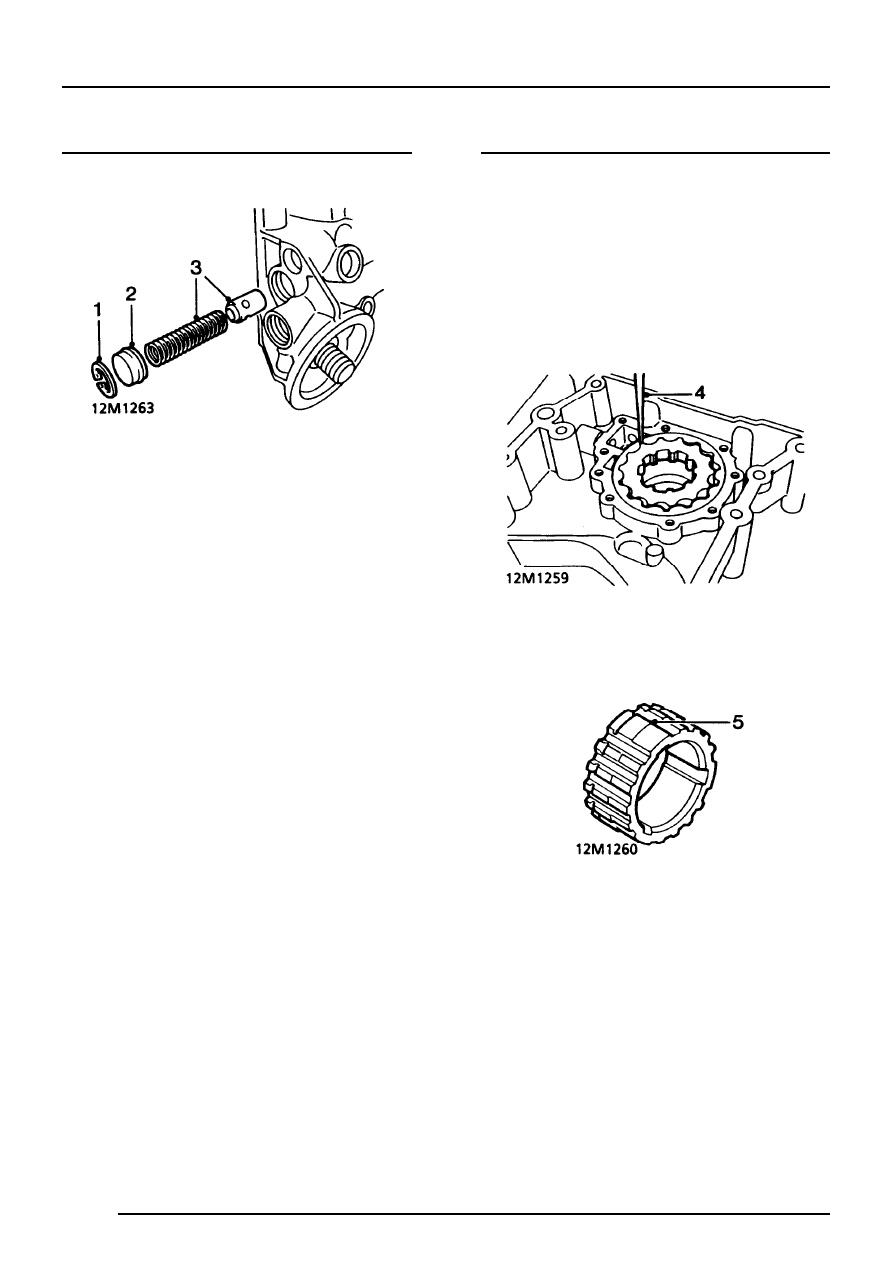Land Rover V8 engine. Manual - part 8

ENGINE
18
OVERHAUL
Oil pressure relief valve - remove
1. Remove circlip.
2. Remove relief valve plug, remove and discard
’O’ ring.
3. Remove relief valve spring and piston.
Oil pump - inspection
1. Thoroughly clean oil pump drive gear, cover
plate, rotors and housing. Remove all traces of
Loctite from cover plate securing screws;
ensure tapped holes in timing cover are clean
and free from oil.
2. Check mating surfaces of cover plate, rotors
and housing for scoring.
3. Assemble rotors and oil pump drive gear in
housing ensuring that reference marks are
aligned.
4. Using feeler gauges, check clearance between
teeth of inner and outer rotors:
Maximum clearance = 0.25 mm
5. Remove oil pump drive gear, check depth of
any wear steps on gear teeth:
Wear step maximum depth = 0.15 mm